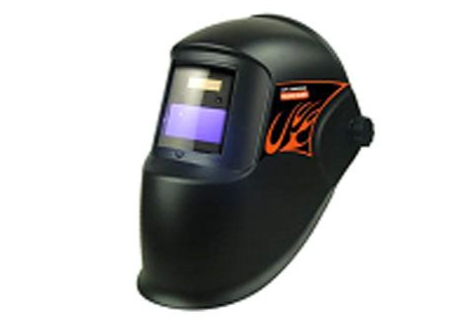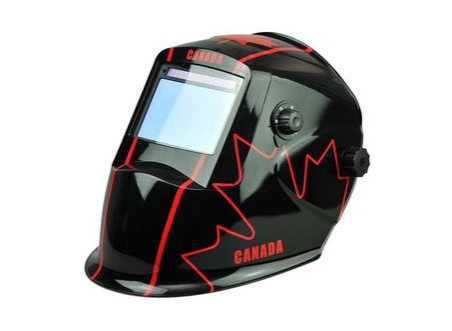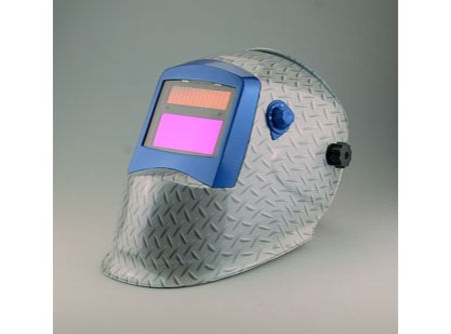Welding helmets often called "hoods," are one of the most important pieces of personal protective equipment a welder must-have. A properly fitted helmet not only protects the eyes and skin from severe sparks, but also from the ultraviolet and infrared rays emitted by the electric arc that can damage vision.
As one of the most visible pieces of safety apparel, welding helmets also give wearers the opportunity to add a little personal style to their welding gear. With this in mind, today's welding helmets are available in a variety of colors and graphics.

HB-1450 Helmet
These visual features draw attention, but the protective features of the helmet - combined with comfort considerations - are what welders should consider when choosing the right helmet for their needs. A welding helmet should be lightweight and balanced to ensure that it can be worn comfortably throughout the day, providing flexible adjustment while protecting their eyes and face from splashes, sparks, and harmful light.
Today's helmets are more practical than the helmets of 10 or 15 years ago. They are designed to meet the specific needs of welders on any job. All products, including the least expensive, must meet strict global safety standards. In the United States, the standard is ANSI Z87.1, and in Canada, it is CAN/CSA Z94.3. These standards address issues such as light leakage, flame resistance, and impact resistance.
Check out Our Auto Darkening Welding Helmet
Why must I use a welding helmet?
Anyone who welds or is watching someone else weld should always wear a welding helmet because they protect the welder from sparks, ultraviolet light, and torch glare.
>>The reason why welders must wear helmets is because of the very bright light that is emitted when welding. As mentioned earlier, this light can burn the cornea and can cause temporary or permanent blindness if safety precautions are not taken.
>> Another special reason for wearing a helmet is that in dark places, the eyes cannot adjust to changes in brightness fast enough to prevent damage.
>> It protects you not only from flying sparks but also from the extremely vivid welding arc.
>> A good helmet is usually easy to see through, but will automatically dim the moment a welding arc is detected.

Auto Darkening Welding Helmet
Some of the different welding helmets.
Lens type
* Auto-darkening
* Normal lens
Auto-darkening
These are the advantages of using an auto-darkening welding helmet. You don't have to flip the viewing cap or the entire helmet. Because of this, it's easier on your neck without all the flipping. If you are working in a very crowded place, you don't have to worry about working closely with your workpiece. You will be able to see your workpiece very clearly but still, be protected. They are solar and battery-powered.
Plain lenses
While regular lenses are not as effective as auto-darkening, even they can be used. They are quite cheap and are sufficient for beginners.

Auto Darkening Welding Helmet
Variable or fixed shades
Variable shade - If one is performing higher AMP welding, then you will need to change the shade to #12 or possibly more, depending on what one is doing.
Fixed Shade - If a person is welding at a similar current intensity and type of weld, then the fixed shade will work for anyone.
Weld Cap Components
>> Housing
>> Outer cover
>> Filter lens
>> Retaining lens
>> Gasket
Before purchasing, make sure that all of these components in the welding helmet are correct and in good condition.
Consulting an expert is the best way to make sure you have the best type of welding helmet. Contact us at Hebei Machinery for expert advice on all things welding helmets.










